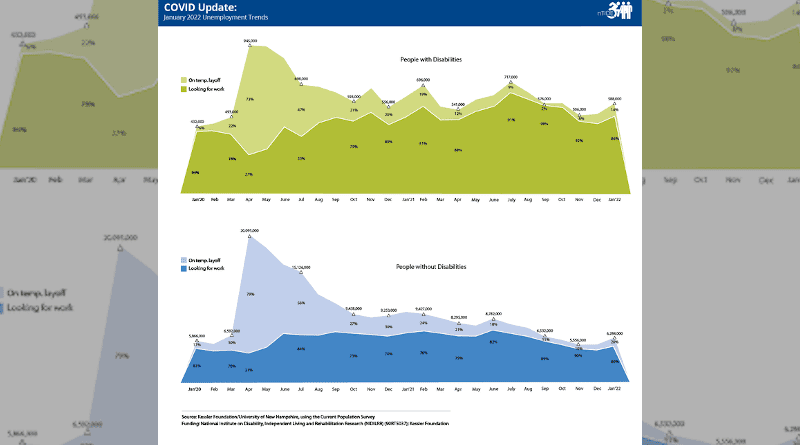Rise In January Unemployment Reflects Omicron Surge
Unemployment rose for people with and without disabilities as the surge in the omicron variant affected the labor market in January, according to a National Trends in Disability Employment (nTIDE) COVID Update.
In April of 2020, restrictions on economic activity in the U.S. due to the COVID-19 pandemic precipitated an unprecedented rise in furloughs and people looking for work, prompting the addition of this mid-month nTIDE COVID Update. The mid-month nTIDE follows two key unemployment indicators – furloughs, or temporary layoffs, and the number of people looking for work, comparing trends for people with and without disabilities.
January’s unemployment numbers show an increase in furloughs and people looking for work, according to nTIDE expert Andrew Houtenville, PhD, professor of economics at the University of Hampshire (UNH) and research director of the UNH Institute on Disability. “We’re definitely seeing a slowing in forward momentum, but the February numbers will tell us more,” said Dr. Houtenville. “Given the recent declines in new COVID-19 infections and the growing consensus supporting the lifting of pandemic restrictions, the uptick in unemployment may be short-lived.”
“Also, there may be an upside to these data,” he added. “The increase in people looking for work may be a sign that jobseekers with disabilities are taking advantage of opportunities in the evolving labor market.” This observation was echoed by Elaine E. Katz, MS, CCC-SLP, senior vice president of grantmaking and communications at Kessler Foundation, who cited information from the Essex County Disability Committee of the Newark Workforce Development Board: “In New Jersey, we are seeing people with disabilities being hired more quickly and getting better jobs, despite the ongoing shortage of job coaches and support staff.”
Dr. Houtenville sounded a note of caution, saying, “It’s not possible to predict how the pandemic will unfold. If new variants arise, we may see recurring fluctuations in unemployment. These may be minimized as businesses adapt to these disruptions, and public health measures help to modify their impact.”

